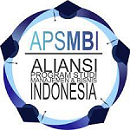STRENGTH-BASED LEADERSHIP: SEBUAH TELAAH KONSEPTUAL
Abstract
Tujuan artikel ini adalah untuk mengeksplorasi bagaimana memahami kekuatan dapat membuat seseorang menjadi pemimpin yang lebih baik. Penelitian ini merupakan jenis penelitian kualitatif. Metode pengumpulan data adalah dengan melalui studi Pustaka atau studi literatur. Data berupa data kualitatif berupa konsep teori dan hasil-hasil penelitian mengenai strength-based leadership. Ada tiga kelompok utama yang telah menhasilkan instrumen dalam membantu individu mengidentifikasikan kekuatan kepemimpinannya, antara lain: Gallup, VIA Institute on Character, dan Centre of Applied Positive Psychology di Inggris. Ada beberapa cara khusus untuk menggabungkan kekuatan dalam lingkungan pribadi dan pekerjaan seorang pemimpin, yaitu (1) menemukan kekuatan, (2) mengembangkan kekuatan, (3) mengatasi kelemahan, (4) mengenali dan melibatkan kekuatan orang lain, dan (5) menumbuhkan lingkungan berbasis kekuatan yang positif.
Downloads
References
Albignac, F., Lantheaume, S., & Shankland, R. (2024). Mindfulness and Positive Psychology Interventions for Depression: A Controlled Comparative Pilot Study. PSYCHOLOGIE FRANCAISE, 69 (1), 49-65. doi:https://psycnet.apa.org/doi/10.1016/j.psfr.2022.07.004
Asriani, Mintarti, S., & ZA, S. Z. (2020). Pengaruh Gaya Kepemimpinan Transformasional dan Budaya Organisasi Terhadap Kinerja dan Kepuasan Kerja sebagai Variabel Intervening. Jurnal Bisnis dan Manajemen (JBM), 16 (3), 217-234. doi:https://doi.org/10.23960/jbm.v16i3.126
Bakhshandeh, B., & Rothwell, W. J. (2023). Building an Organizational Coaching Culture: Creating Effective Environments for Growth and Success in Organizations. London: Routledge.
Blanchflower, D. G., & Bryson, A. (2024). Wellbeing Rankings. Social Indicators Research, 171 (2), 513-565. doi:https://doi.org/10.1007/s11205-023-03262-y
Buckingham, M., & Clifton, D. O. (2001). Now, Discover Your Strengths. New York: The Free Press.
Cameron, K. (2012). Positive Leadership: Strategies for Extraordinary Performance Second Edition. San Fransisco: Berrett-Koehler Publishers.
Cameron, K. S., Dutton, J. E., & Quinn, R. E. (2003). Foundations of Positive Organizational Scholarship. In K. S. Cameron, J. E. Dutton, & R. E. Quinn (Eds.), Positive organizational scholarship: Foundations of a new discipline (pp. 3-13). San Fransisco: Berrett-Koehler Publishers.
Campbell, W. J. (2024). Lost in a Gallup: Polling Failure in US Presidential Elections. California: University of California Press.
Caniago, I., & Taufik. (2022). Pengaruh Kepemimpinan Spiritual Terhadap Kinerja Karyawan yang Dimediasi oleh Spiritualitas Islami di Tempat Kerja. Jurnal Bisnis dan Manajemen (JBM), 18 (3), 146-156. doi:https://doi.org/10.23960/jbm.v18i3.726
Carr, A., Finneran, L., Boyd, C., Shirey, C., Canning, C., Stafford, O., Corbett, C. (2024). The Evidence-Base for Positive Psychology Interventions: A Mega-Analysis of Meta-Analyses. The Journal of Positive Psychology, 19 (2), 191-205. doi:https://doi.org/10.1080/17439760.2023.2168564
Chu, X., Ding, H., Zhang, L., & Li, Z. A. (2022). Strengths-Based Leadership and Turnover Intention: The Roles of Felt Obligation for Constructive Change and Job Control. Frontiers in Psychology, 13, 1-10. doi:https://doi.org/10.3389/fpsyg.2022.786551
Clark, J. T., & Chrispeels, J. H. (2022). Using Multiple Leadership Frames to Understand How Two School Principals are Influencing Teachers' Practices and Achievement of Hispanic English Learners. Journal of Educational Administration, 60 (3), 303-322. doi:https://doi.org/10.1108/JEA-03-2021-0054
Clifton, D. O., & Harter, J. K. (2003). Investing in Strengths. In K. S. Cameron, J. E. Dutton, & R. E. Quinn (Eds.), Positive organizational scholarship: Foundations of a new discipline (pp. 111-121). San Fransisco: Berrett-Koehler Publishers.
Ding, H., Liu, J., & Yu, E. (2024). How and When Do Strengths Work? The Effect of Strengths-Based Leadership on Follower Career Satisfaction. Personnel Review, 53 (6), 1392-1407. doi:https://doi.org/10.1108/PR-07-2022-0485
Ding, H., & Quan, G. (2021). How and When Does Follower’s Strengths‐Based Leadership Relate to Follower Innovative Behavior: The Roles of Self‐Efficacy and Emotional Exhaustion. The Journal of Creative Behavior, 55 (3), 591-603. doi:https://doi.org/10.1002/jocb.473
Ding, H., & Yu, E. (2020). Follower Strengths-Based Leadership and Follower Innovative Behavior: The Roles of Core Self-Evaluations and Psychological Well-Being. Revista de Psicología del Trabajo y de las Organizaciones, 36 (2), 103-110. doi:https://doi.org/10.5093/jwop2020a8
Ding, H., & Yu, E. (2021a). Followers' Strengths-Based Leadership and Strengths Use of Followers: The Roles of Trait Emotional Intelligence and Role Overload. Personality and Individual Differences, 168. doi:https://doi.org/10.1016/j.paid.2020.110300
Ding, H., & Yu, E. (2021b). Influence of Followers’ Strengths-Based Leadership on Follower Strengths Use Through Intention to Use Strengths: The Moderating Role of Work Pressure. International Journal of Social Psychology, 36 (2), 355-377. doi:https://doi.org/10.1080/02134748.2021.1886701
Ding, H., & Yu, E. (2022a). How and When Does Follower’s Strengths-Based Leadership Contribute to Follower Work Engagement? The Roles of Strengths Use and Core Self-Evaluation. German Journal of Human Resource Management, 36 (2), 180-196. doi:https://doi.org/10.1177/23970022211053284
Ding, H., & Yu, E. (2022b). Strengths-Based Leadership and Employee Psychological Well-Being: A Moderated Mediation Model. Journal of Career Development, 49 (5), 1108-1121. doi:https://doi.org/10.1177/08948453211018807
Ding, H., Yu, E., & Li, Y. (2020). Strengths-Based Leadership and Its Impact on Task Performance: A Preliminary Study. South African Journal of Business Management, 51 (1), 1-9. doi:https://doi.org/10.4102/sajbm.v51i1.1832
Dutton, J. E., & Ragins, B. R. (2007). Exploring Positive Relationships at Work: Building a Theoretical and Research Foundation. New York: Lawrence Erlbaum Associates.
Eaton, S. E., Stoesz, B. M., & McKenzie, A. (2024). Academic Integrity Leadership and Community Building in Canadian Higher Education. In S. E. Eaton (Ed.), Second Handbook of Academic Integrity (pp. 1847-1866). New York: Springer International Publishing.
Fredrickson, B. L. (2001). The Role of Positive Emotions in Positive Psychology: The Broaden-and-Build Theory of Positive Emotions. American psychologist, 56 (3), 218-226. doi:https://psycnet.apa.org/doi/10.1037/0003-066X.56.3.218
Gallup. (n.d.). The 34 CliftonStrengths Themes Explain Your Talent DNA. Retrieved from https://www.gallup.com/cliftonstrengths/en/253715/34-cliftonstrengths-themes.aspx
Gottlieb, L. N., Gottlieb, B., & Bitzas, V. (2021). Creating Empowering Conditions for Nurses with Workplace Autonomy and Agency: How Healthcare Leaders Could Be Guided by Strengths-Based Nursing and Healthcare Leadership (SBNH-L). Journal of healthcare leadership, 13, 169-181. doi:https://doi.org/10.2147/jhl.s221141
Hubley, P., Gottlieb, L. N., & Durrant, M. (2022). Influencing Work Culture: A Strengths-Based Nursing Leadership and Management Education Program. Canadian Journal of Nursing Leadership, 35 (1), 24-37. doi:https://doi.org/10.12927/cjnl.2022.26752
Kaya, R., & Tanrıverdi, D. (2024). The Effect on Mental Well-Being, Life Attitude and Depression Levels of Positive Psychology Program Applied to Patients Diagnosed with Depression. Current Psychology, 43 (1), 119-131. doi:https://doi.org/10.1007/s12144-023-04244-6
Kwan, H. K., Chen, Y., Tang, G., Zhang, X., & Le, J. (2024). Power Distance Orientation Alleviates The Beneficial Effects of Empowering Leadership on Actors’ Work Engagement Via Negative Affect and Sleep Quality. Asia Pacific Journal of Management, 1-26. doi:https://doi.org/10.1007/s10490-024-09947-3
Lavoie-Tremblay, M., Boies, K., Clausen, C., Frechette, J., Manning, K., Gelsomini, C., Gottlieb, L. N. (2024a). Evaluation of The Effectiveness of A Strengths-Based Nursing and Healthcare Leadership Program Aimed at Building Leadership Capacity: A Concurrent Mixed-Methods Study. International Journal of Nursing Studies Advances, 6. doi:https://doi.org/10.1016/j.ijnsa.2024.100184
Lavoie-Tremblay, M., Boies, K., Clausen, C., Frechette, J., Manning, K., Gelsomini, C., Gottlieb, L. N. (2024b). Nursing Leaders’ Perceptions of The Impact of The Strengths-Based Nursing and Healthcare Leadership Program Three Months Post Training. International Journal of Nursing Studies Advances, 6. doi:https://doi.org/10.1016/j.ijnsa.2024.100190
Linley, A. (2008). Average to A+: Realising Strengths in Yourself and Others. United Kingdom: CAPP Press.
Linley, A., & Stoker, H. (2012). Technical Manual and Statistical Properties of Realise 2. United Kingdom: CAPP Press.
Liu, Q., & Tong, Y. (2022). Employee Growth Mindset and Innovative Behavior: The Roles of Employee Strengths Use and Strengths-Based Leadership. Frontiers in Psychology, 13. doi:https://doi.org/10.3389/fpsyg.2022.814154
MacKie, D. (2021). Strength-Based Coaching and Sustainability Leadership. In W.-A. Smith, I. Boniwell, & S. Green (Eds.), Positive Psychology Coaching in The Workplace (pp. 375-396). New York: Springer International Publishing.
Mai, N. K., Do, T. T., & Phan, N. A. (2022). The Impact of Leadership Traits and Organizational Learning on Business Innovation. Journal of Innovation & Knowledge, 7 (3), 1-9. doi:https://doi.org/10.1016/j.jik.2022.100204
McCarron, G. P., & Yamanaka, A. (2022). Effectiveness of a Strengths-Based Leadership Coaching Program for Women. Journal of Leadership Education, 22 (1), 149-161. doi:https://doi.org/10.12806/V22/I1/R9
McLaughlin, C. P., & Kunk-Czaplicki, J. A. (2020). Leadership: Theory and Practice by Peter G. Northouse (Review). Journal of College Student Development, 61 (2), 260-261. doi:https://doi.org/10.1353/csd.2020.0023
Movahedazarhouligh, S., & Jones, M. (2024). Leading in Times of Uncertainty: Early Childhood Directors Navigating the COVID-19 Pandemic. Journal of Childhood, Education & Society, 5 (1), 89-103. doi:https://doi.org/10.37291/2717638x.202451296
Ongel, V., Gunsel, A., Celik, G. G., Altındag, E., & Tatli, H. S. (2023). Digital Leadership’s Influence on Individual Creativity and Employee Performance: A View Through The Generational Lens. Behavioral Sciences, 14 (3), 1-18. doi:https://doi.org/10.3390/bs14010003
Park, N. (2021). Classifying and Measuring Strengths of Character. In C. R. Snyder, S. J. Lopez, L. M. Edwards, & S. C. Marques (Eds.), The Oxford Handbook of Positive Psychology Third Edition (pp. 1-19). New York: Oxford University Press.
PEEC. (2014). Character Strengths. Retrieved from https://www.positiveeducationcurriculum.com/resources/character-strengths/
Peng, Y., Lou, K., & Xiong, T. (2024). Understanding Teacher Professional Commitment From a Positive Psychology Perspective: a Case from Myanmar's Chinese Language Teachers. The Modern Language Journal, 108 (1), 222-242. doi:https://doi.org/10.1111/modl.12908
Peterson, C. M., & Seligman, M. E. (2003). Positive Organizational Studies: Lessons from Positive Psychology. In K. S. Cameron, J. E. Dutton, & R. E. Quinn (Eds.), Positive organizational scholarship: Foundations of a new discipline (pp. 14-27). San Fransisco: Berrett-Koehler Publishers.
Qarismail, T., & Prayekti. (2020). Pengaruh Gaya Kepemimpinan Transformasional, Motivasi dan Disiplin Kerja Terhadap Kepuasan Kerja Karyawan Studi pada The Westlake Resort Yogyakarta. Jurnal Bisnis dan Manajemen (JBM), 16 (2), 115-129. doi:https://doi.org/10.23960/jbm.v16i2.71
Rath, T. (2007). StrengthsFinder 2.0. New York: Gallup Press.
Rath, T., & Conchie, B. (2008). Strengths Based Leadership: Great Leaders, Teams, and Why People Follow. New York: Gallup Press.
Rivera, A. R., Galvez-Mozo, A., & Tirado-Serrano, F. (2024). The Imperative of Happiness in Positive Psychology: Towards a Psychopolitics of Wellbeing. New Ideas in Psychology, 72, 1-9. doi:https://doi.org/10.1016/j.newideapsych.2023.101058
Seligman, M. E. (2002). Authentic Happiness: Using the New Positive Psychology to Realize Your Potential for Lasting Fulfillment. New York: Atria Publishing Group.
Seligman, M. E., & Csikszentmihalyi, M. (2000). Positive Psychology: An Introduction. American psychologist, 55 (1), 5-14. doi:https://doi.org/10.1037//0003-066x.55.1.5
Snyder, C. R., Thompson, L. Y., Shorey, H. S., & Heinze, L. (2003). The Hopeful Ones: a Psychological Inquiry Into the Positive Mind and Heart. In R. Jacoby & G. Keinan (Eds.), Between stress and hope: From a disease-centered to a health-centered perspective (pp. 57-79). United States: Praeger Publishers.
Wang, F., & Ding, H. (2023). Strengths-Based Leadership and Employee Strengths Use: the Roles of Strengths Self-Efficacy and Job Insecurity. Revista de Psicología del Trabajo y de las Organizaciones, 39 (1), 47-54. doi:https://doi.org/10.5093/jwop2023a6
Wang, F., Wu, M., Ding, H., & Wang, L. (2024). How and Why Strengths-Based Leadership Relates to Nurses’ Turnover Intention: The Roles of Job Crafting and Work Fatigue. Leadership & Organization Development Journal, 45 (4), 702-718. doi:https://doi.org/10.1108/lodj-03-2023-0143
Wang, J., van Woerkom, M., Breevaart, K., Bakker, A. B., & Xu, S. (2023). Strengths-Based Leadership and Employee Work Engagement: A Multi-Source Study. Journal of Vocational Behavior, 142, 1-13. doi:https://doi.org/10.1016/j.jvb.2023.103859
Zyl, L. E. v., Gaffaney, J., Vaart, L. v. d., Dik, B. J., & Donaldson, S. I. (2024). The Critiques and Criticisms of Positive Psychology: A Systematic Review. The Journal of Positive Psychology, 19 (2), 206-235. doi:https://doi.org/10.1080/17439760.2023.2178956

This work is licensed under a Creative Commons Attribution-NonCommercial-ShareAlike 4.0 International License.
Jurnal Bisnis dan Manajemen (JBM) allows readers to read, download, copy, distribute, print, search, or link to the full texts of its articles and allow readers to use them for any other lawful purpose. The journal allows the author(s) to hold the copyright without restrictions. Finally, the journal allows the author(s) to retain publishing rights without restrictions.
Authors are allowed to archive their submitted article in an open access repository, and the final published article in an open access repository with an acknowledgment of its initial publication in this journal









